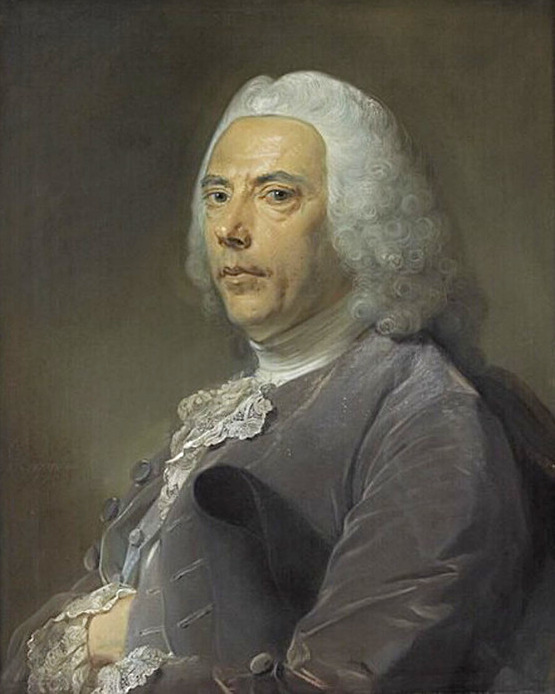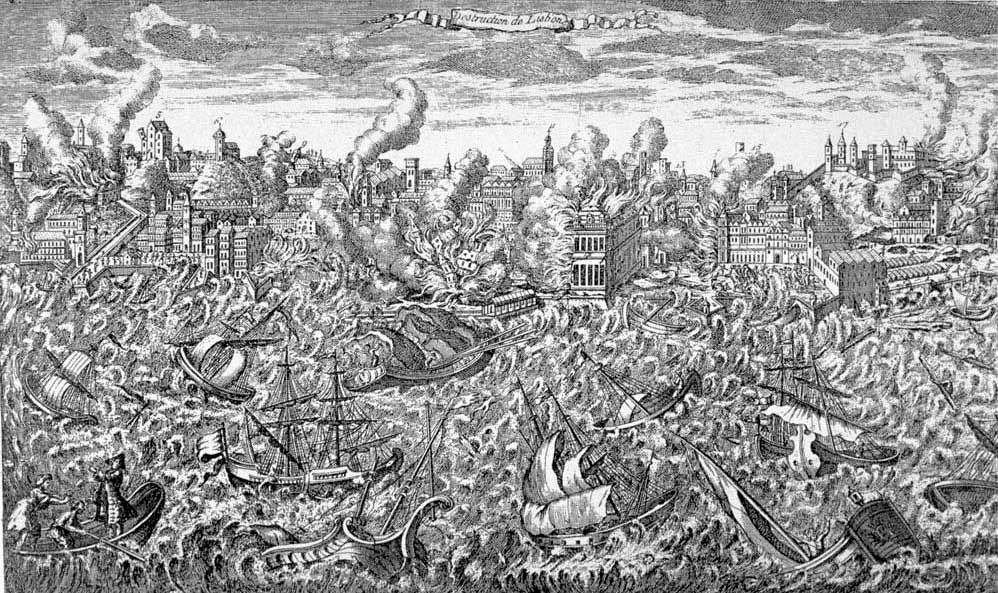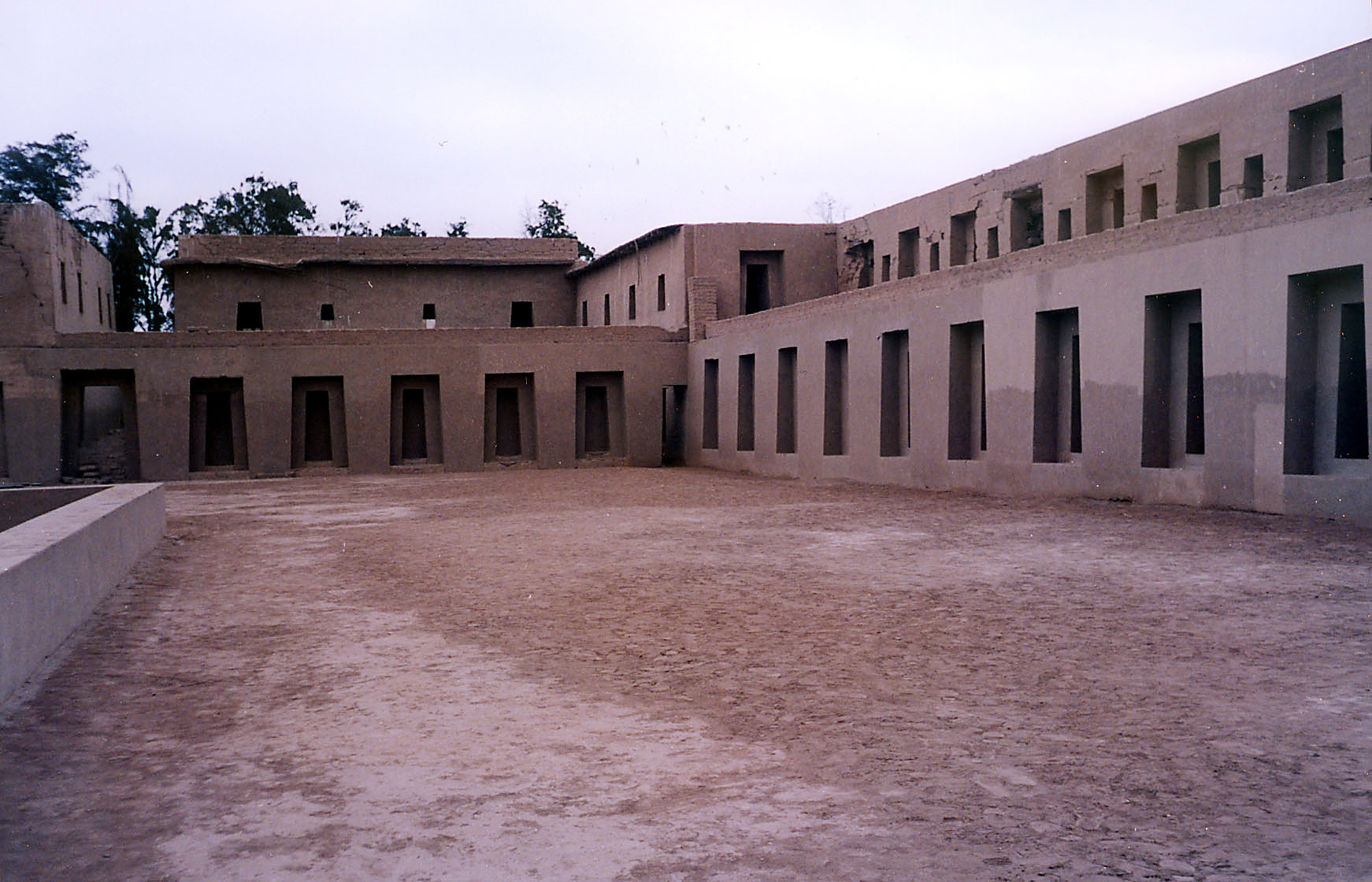|
Louis Godin
Louis Godin (28 February 1704 – 11 September 1760) was a French astronomer and member of the French Academy of Sciences. He worked in Peru, Spain, Portugal and France. Biography Godin was born in Paris; his parents were François Godin and Elisabeth Charron. He was graduated at the College of Louis le Grand, and studied astronomy under Joseph-Nicolas Delisle. His astronomical tables (1724) gave him reputation, and the French Academy of Sciences elected him a pensionary member. He was commissioned to write a continuation of the history of the academy, left uncompleted by Bernard le Bovier de Fontenelle, and was also authorized to submit to the minister, Cardinal André-Hercule de Fleury, the best means of discovering the truth in regard to the figure of the Earth, and proposed sending expeditions to the equator and the polar sea. The minister approved the plan and appropriated the necessary means, the academy designating Charles Marie de La Condamine, Pierre Bouguer, and Godi ... [...More Info...] [...Related Items...] OR: [Wikipedia] [Google] [Baidu] [Amazon] |
Paris
Paris () is the Capital city, capital and List of communes in France with over 20,000 inhabitants, largest city of France. With an estimated population of 2,048,472 residents in January 2025 in an area of more than , Paris is the List of cities in the European Union by population within city limits, fourth-most populous city in the European Union and the List of cities proper by population density, 30th most densely populated city in the world in 2022. Since the 17th century, Paris has been one of the world's major centres of finance, diplomacy, commerce, culture, Fashion capital, fashion, and gastronomy. Because of its leading role in the French art, arts and Science and technology in France, sciences and its early adoption of extensive street lighting, Paris became known as the City of Light in the 19th century. The City of Paris is the centre of the Île-de-France region, or Paris Region, with an official estimated population of 12,271,794 inhabitants in January 2023, or ... [...More Info...] [...Related Items...] OR: [Wikipedia] [Google] [Baidu] [Amazon] |
Pierre Bouguer
Pierre Bouguer () (16 February 1698, Le Croisic – 15 August 1758, Paris) was a French mathematician, geophysicist, geodesist, and astronomer. He is also known as "the father of naval architecture". Career Bouguer's father, Jean Bouguer, one of the best hydrographers of his time, was Regius Professor of hydrography at Le Croisic in lower Brittany, and author of a treatise on navigation. He taught his sons Pierre and Jan at their home, where he also taught private students. In 1714, at the age of 16, Pierre was appointed to succeed his deceased father as professor of hydrography. In 1727 he gained the prize given by the French Academy of Sciences for his paper ''On the masting of ships'', beating Leonhard Euler; and two other prizes, one for his dissertation ''On the best method of observing the altitude of stars at sea'', the other for his paper ''On the best method of observing the variation of the compass at sea''. These were published in the Prix de l'Académie des Sci ... [...More Info...] [...Related Items...] OR: [Wikipedia] [Google] [Baidu] [Amazon] |
1755 Lisbon Earthquake
The 1755 Lisbon earthquake, also known as the Great Lisbon earthquake, impacted Portugal, the Iberian Peninsula, and Northwest Africa on the morning of Saturday, 1 November, All Saints' Day, Feast of All Saints, at around 09:40 local time. In combination with subsequent fires and a tsunami, the earthquake almost completely destroyed Lisbon and adjoining areas. Seismologists estimate the Lisbon earthquake had a magnitude of 7.7 or greater on the moment magnitude scale, with its epicenter in the Atlantic Ocean about west-southwest of Cape St. Vincent, a cape in Algarve region, and about southwest of Lisbon. Chronologically, it was the third known large-scale earthquake to hit the city (following those of 1332 and 1531 Lisbon earthquake, 1531). Estimates place the death toll in Lisbon around 30,000–40,000. A further 10,000 may have died in Morocco. The earthquake accentuated political tensions in Portugal and profoundly disrupted the Portuguese Empire. The event was widely di ... [...More Info...] [...Related Items...] OR: [Wikipedia] [Google] [Baidu] [Amazon] |
Cádiz
Cádiz ( , , ) is a city in Spain and the capital of the Province of Cádiz in the Autonomous communities of Spain, autonomous community of Andalusia. It is located in the southwest of the Iberian Peninsula off the Atlantic Ocean separated from neighbouring San Fernando, Cádiz, San Fernando by a narrow isthmus. Cádiz, one of the List of oldest continuously inhabited cities, oldest continuously inhabited cities in Western Europe, was founded by the Phoenicians as a trading post.Strabo, ''Geographica'' 3.5.5 In the 18th century, the Port in the Bay of Cádiz consolidated as the main harbour of mainland Spain, enjoying the virtual monopoly of trade with the Americas until 1778. It is also the site of the University of Cádiz. Situated on a narrow slice of land surrounded by the sea‚ Cádiz is, in most respects, a typical Andalusian city with well-preserved historical landmarks. The older part of Cádiz, within the remnants of the defensive wall, city walls, is commonly refer ... [...More Info...] [...Related Items...] OR: [Wikipedia] [Google] [Baidu] [Amazon] |
Luis Godin Charron-calle San Pedro-IMG 20231125 150657
Luis is a given name. It is the Spanish form of the originally Germanic name or . Other Iberian Romance languages have comparable forms: (with an accent mark on the i) in Portuguese and Galician, in Aragonese and Catalan, while is archaic in Portugal, but common in Brazil. Origins The Germanic name (and its variants) is usually said to be composed of the words for "fame" () and "warrior" () and hence may be translated to ''famous warrior'' or "famous in battle". According to Dutch onomatologists however, it is more likely that the first stem was , meaning fame, which would give the meaning 'warrior for the gods' (or: 'warrior who captured stability') for the full name.J. van der Schaar, ''Woordenboek van voornamen'' (Prisma Voornamenboek), 4e druk 1990; see also thLodewijs in the Dutch given names database Modern forms of the name are the German name Ludwig and the Dutch form Lodewijk. and the other Iberian forms more closely resemble the French name Louis, a derivation ... [...More Info...] [...Related Items...] OR: [Wikipedia] [Google] [Baidu] [Amazon] |
1746 Lima–Callao Earthquake
The 1746 Lima–Callao earthquake occurred at on 28 October with a moment magnitude of 8.6–8.8 and a maximum Mercalli intensity of XI (''Extreme''). The epicenter was located about north-northwest of the capital Lima, which was almost completely destroyed, and the subsequent tsunami devastated the port city of Callao. It was the deadliest earthquake in Peru's history prior to the 1970 earthquake. Tectonic setting Peru lies above the convergent boundary where the Nazca plate is subducting beneath the South American plate at a rate of 61 mm per year. It has been the location for many large and damaging earthquakes since historical records began, most of which triggered devastating tsunamis. The southern segment of the Peruvian part of this plate boundary is affected by the presence of the Nazca aseismic ridge, on the downgoing plate. It also marks a major change in the subduction geometry between 'flat-slab' subduction to the northwest and normally dipping subduction to ... [...More Info...] [...Related Items...] OR: [Wikipedia] [Google] [Baidu] [Amazon] |
Lima, Peru
Lima ( ; ), founded in 1535 as the Ciudad de los Reyes (, Spanish for "City of Biblical Magi, Kings"), is the capital and largest city of Peru. It is located in the valleys of the Chillón River, Chillón, Rímac River, Rímac and Lurín Rivers, in the desert zone of the central coastal part of the country, overlooking the Pacific Ocean. The city is considered the political, cultural, financial and commercial center of Peru. Due to its geostrategic importance, the Globalization and World Cities Research Network has categorized it as a "beta" tier city. Jurisdictionally, the metropolis extends mainly within the province of Lima and in a smaller portion, to the west, within the Constitutional Province of Callao, where the seaport and the Jorge Chávez Airport are located. Both provinces have regional autonomy since 2002. The 2023 census projection indicates that the city of Lima has an estimated population of 10,092,000 inhabitants, making it the List of cities in the Americas b ... [...More Info...] [...Related Items...] OR: [Wikipedia] [Google] [Baidu] [Amazon] |
Andes
The Andes ( ), Andes Mountains or Andean Mountain Range (; ) are the List of longest mountain chains on Earth, longest continental mountain range in the world, forming a continuous highland along the western edge of South America. The range is long and wide (widest between 18th parallel south, 18°S and 20th parallel south, 20°S latitude) and has an average height of about . The Andes extend from south to north through seven South American countries: Argentina, Chile, Bolivia, Peru, Ecuador, Colombia, and Venezuela. Along their length, the Andes are split into several ranges, separated by intermediate depression (geology), depressions. The Andes are the location of several high plateaus—some of which host major cities such as Quito, Bogotá, Cali, Arequipa, Medellín, Bucaramanga, Sucre, Mérida, Mérida, Mérida, El Alto, and La Paz. The Altiplano, Altiplano Plateau is the world's second highest after the Tibetan Plateau. These ranges are in turn grouped into three majo ... [...More Info...] [...Related Items...] OR: [Wikipedia] [Google] [Baidu] [Amazon] |
Quito
Quito (; ), officially San Francisco de Quito, is the capital city, capital and second-largest city of Ecuador, with an estimated population of 2.8 million in its metropolitan area. It is also the capital of the province of Pichincha Province, Pichincha. Quito is in a valley on the eastern slopes of Pichincha (volcano), Pichincha, an active stratovolcano in the Andes. Quito's elevation of makes it either the List of capital cities by altitude, highest or the second highest national capital city in the world. This varied standing is because Bolivia is a List of countries with multiple capitals, country with multiple capitals; if La Paz is considered the Bolivian national capital, it tops the list of highest capitals, but if Sucre is specified as the capital, then it is the second highest, behind Quito. ... [...More Info...] [...Related Items...] OR: [Wikipedia] [Google] [Baidu] [Amazon] |
Santo Domingo
Santo Domingo, formerly known as Santo Domingo de Guzmán, is the capital and largest city of the Dominican Republic and the List of metropolitan areas in the Caribbean, largest metropolitan area in the Caribbean by population. the Distrito Nacional, city center had a population of 1,029,110 while its Metropolitan area, the Greater Santo Domingo, had a population of 4,274,651. The city is coterminous with the boundaries of the Distrito Nacional (D.N.), itself bordered on three sides by Santo Domingo Province. Santo Domingo was founded in 1496 by the Spanish Empire and is the oldest continuously inhabited European colonization of the Americas, European settlement in the Americas. It was the first seat of Spanish colonial rule in the New World, the Captaincy General of Santo Domingo. Santo Domingo is the site of the first university, cathedral, castle, monastery, and fortress in the New World. The city's Ciudad Colonial (Santo Domingo), Colonial Zone was declared as a World Herit ... [...More Info...] [...Related Items...] OR: [Wikipedia] [Google] [Baidu] [Amazon] |
Philip V Of Spain
Philip V (; 19 December 1683 – 9 July 1746) was List of Spanish monarchs, King of Spain from 1 November 1700 to 14 January 1724 and again from 6 September 1724 to his death in 1746. His total reign (45 years and 16 days) is the longest in the history of the Spanish monarchy, surpassing Philip IV of Spain, Philip IV. Although his ascent to the throne precipitated the War of the Spanish Succession, Philip V instigated many important reforms in Spain, most especially the centralization of power of the monarchy and the suppression of regional privileges, via the Nueva Planta decrees, and restructuring of the administration of the Spanish Empire on the Iberian Peninsula and its overseas regions. Philip was born into the House of Bourbon, French royal family (as Philippe, Duke of Anjou) during the reign of his grandfather Louis XIV. He was the second son of Louis, Grand Dauphin, and was third in line to the French throne after his father and his elder brother, Louis, Duke of Burgund ... [...More Info...] [...Related Items...] OR: [Wikipedia] [Google] [Baidu] [Amazon] |







